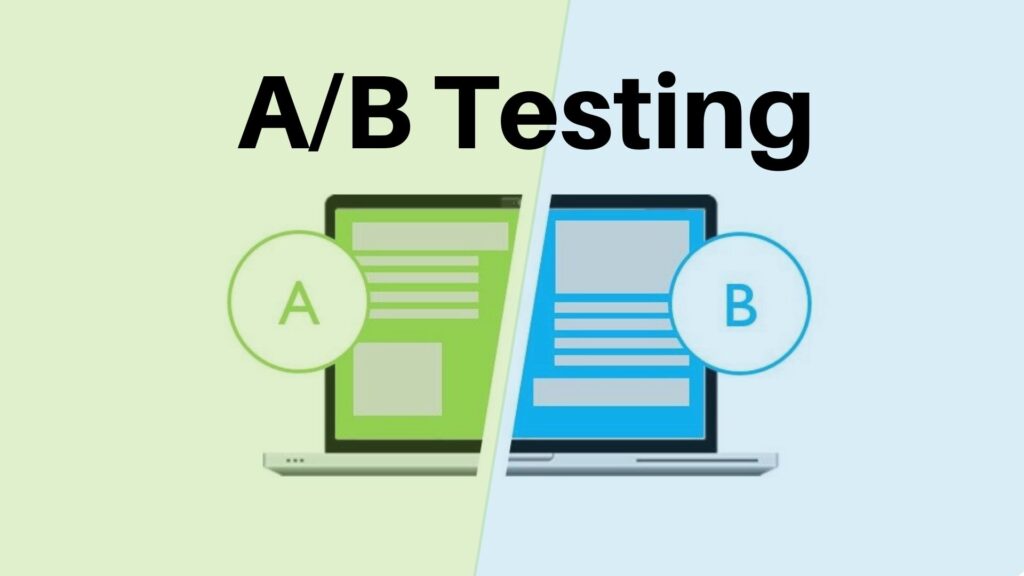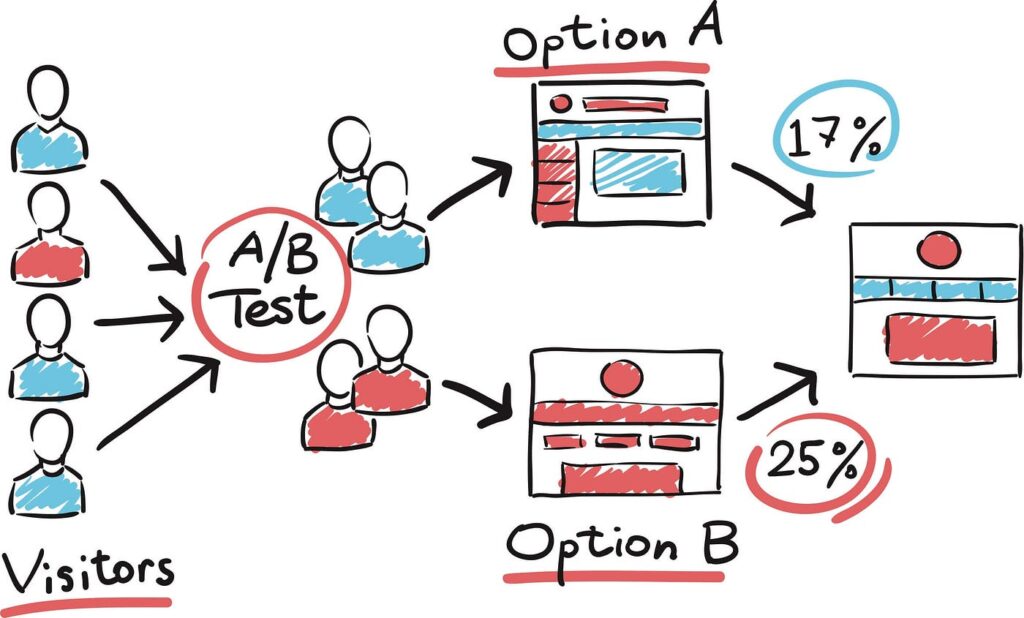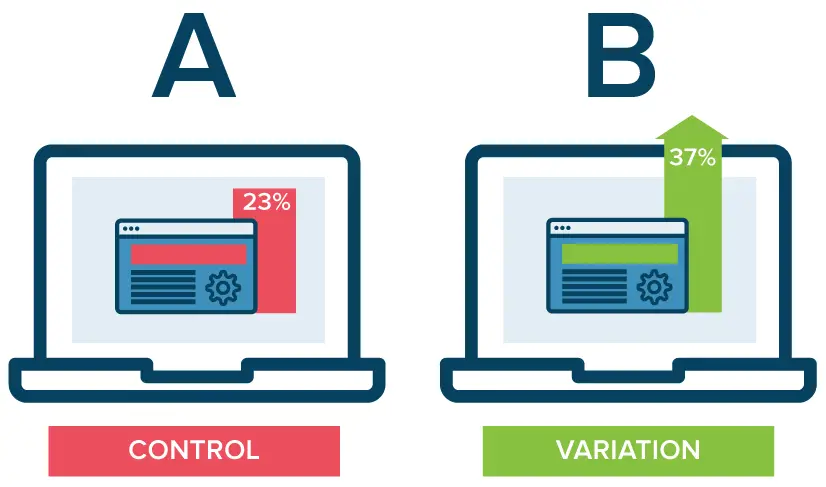Introduction: Why Sydney Startups Should Prioritise Conversion Rate Optimisation
For Sydney startups, the journey to sustainable growth often involves navigating competitive markets and optimising every aspect of their digital presence. A crucial element in this pursuit is Conversion Rate Optimisation (CRO), a strategic approach focused on increasing the percentage of website visitors who complete a desired action, such as making a purchase, filling out a form, or subscribing to a newsletter. Many businesses pour significant resources into driving website traffic, only to overlook the efficiency with which that traffic converts into actual customers or leads. This oversight can lead to substantial revenue leaks and a poor return on investment (ROI) from marketing efforts. By prioritising CRO, startups can ensure their existing website visitors are effectively guided through the sales funnel, transforming browsing into tangible business growth. This proactive stance on Conversion Rate Optimisation is fundamental for achieving higher ROI and scaling operations intelligently in the dynamic Australian market.

Illustration of a magnifying glass examining a website to identify areas for conversion rate optimisation
Sydney startup pain points: revenue leak from poor website conversions
Sydney startups frequently encounter a critical challenge where their promising marketing strategies fail to translate into expected revenue due to inefficient website conversions. This issue, often dubbed ‘revenue leak,’ stems from various factors that deter website visitors from completing their intended actions. For instance, a complex checkout process on an eCommerce site, unclear calls-to-action, or slow loading times can drastically impede conversions. Addressing these pain points proactively through a comprehensive CRO strategy is paramount, ensuring that every marketing dollar spent contributes effectively to business goals. Ignoring these conversion leaks means continuously losing potential loyal customers, undermining the overall effectiveness of an ecommerce digital strategy. Therefore, focusing on CRO provides a robust framework to diagnose and rectify these underlying issues, safeguarding revenue and fostering genuine business growth.
Chart illustrating the typical funnel of website visitors and where potential conversions are lost
Common conversion leaks that waste marketing spend
Many startups unwittingly allow significant portions of their marketing spend to go to waste due to preventable conversion leaks within their digital assets. These leaks manifest in numerous ways, from convoluted navigation that frustrates user experience (UX) to poorly structured landing pages that fail to communicate value propositions clearly. For example, a high bounce rate on a landing page after an expensive ad campaign indicates a critical misalignment between the ad’s promise and the page’s content, directly impacting conversion rates. Furthermore, inadequate mobile responsiveness can alienate a substantial segment of potential customers, leading to abandoned carts and missed sales. Identifying and rectifying these common issues through rigorous testing and data analysis is essential for optimising website performance and ensuring every cent of marketing spend generates maximum ROI.

Infographic showing common website elements that lead to conversion leaks and lost revenue
How behavioural data exposes lost opportunities
Behavioural data provides invaluable insights into how website visitors interact with a site, serving as a powerful diagnostic tool for exposing lost opportunities and conversion leaks. Tools like heatmaps, session recordings, and advanced analytics data allow businesses to observe exactly where users click, scroll, and hesitate, revealing pain points that might otherwise go unnoticed. For instance, if a heatmap shows users consistently ignoring a key call-to-action button, it signals a design or placement issue that is directly impacting conversions. Analysing this Data helps uncover why potential customers aren’t taking the desired action, enabling data-driven strategies for improvement. Understanding user behaviour is critical for effective CRO, moving beyond guesswork to informed decisions that enhance the user experience and drive conversion rates. For a deeper dive into understanding and leveraging these insights, exploring resources such as advanced machine learning tools for data analysis can provide further clarity.

Screenshot of a heatmap illustrating user clicks and engagement on a specific webpage area
Examples of conversion leaks in e-commerce stores and Shopify conversion flows
In the realm of e-commerce, particularly for Shopify stores, conversion leaks can be especially pervasive, undermining revenue and ROI. Common examples include overly long or complicated checkout processes that lead to high cart abandonment rates, confusing product descriptions that fail to convey value, or a lack of trust signals that deter purchases. Imagine an eCommerce site where customers abandon their carts simply because shipping costs are only revealed at the very last step, creating unexpected friction. Another prevalent issue is inconsistent branding or messaging between an ad and the subsequent landing page, which can quickly disorient and disengage website visitors. By identifying these specific friction points through rigorous data analysis and user-experience audits, businesses can implement targeted improvements, thereby significantly boosting their conversion rates and overall performance.
Flowchart detailing a typical Shopify checkout process, highlighting common points of abandonment
Impact on Return-On-Ad-Spend (ROAS) and digital marketing strategy
The effectiveness of any digital marketing strategy is inextricably linked to the efficiency of a website’s conversion rates, directly impacting Return-On-Ad-Spend (ROAS). When a website has significant conversion leaks, every dollar spent on attracting website traffic yields a diminished return, essentially throwing money away. For example, if a campaign drives 10,000 visitors to a site, but only 1% convert due to poor UX, scaling ad spend will only amplify the inefficiency. Conversely, even a modest improvement in conversion rate, say from 1% to 2%, can double the number of conversions without increasing advertising expenditure, leading to a substantial uplift in ROAS and overall revenue. Therefore, robust CRO is not just about optimising a website; it’s about making every aspect of the digital marketing strategy more potent and profitable, ensuring that higher ROI is achieved consistently.

Bar chart comparing ROAS before and after implementing CRO strategies
Examples of conversion leaks in e-commerce stores and Shopify conversion flows
A common pitfall for many startups is an overwhelming focus on short-term traffic generation without adequately considering the long-term implications for maximising ROI. While attracting more website visitors can provide an immediate boost to numbers, if the website isn’t optimised to convert those visitors efficiently, it becomes an unsustainable strategy. Imagine continuously investing in costly digital campaigns to drive traffic to a leaky bucket; the water will always spill out. Long-term maximising ROI demands a fundamental shift towards Conversion Rate Optimisation, ensuring that once traffic arrives, it has the best possible chance to convert. This involves strategic testing, data-driven insights, and continuous refinement of the user journey, creating a robust framework for sustained business growth and profitability, moving beyond fleeting gains to build a foundation of loyal customers and recurring revenue.

Line graph illustrating the divergence of short-term traffic gains versus long-term ROI growth with CRO
What is CRO? Defining Conversion Rate Optimisation for Australian businesses
Conversion Rate Optimisation (CRO) is a systematic process aimed at increasing the percentage of website visitors who take a desired action – whether that’s purchasing a product, filling out a form, or clicking a specific button – without increasing website traffic. For Australian businesses, this means making the most of existing website visitors to achieve higher conversions and greater revenue. It’s a data-driven approach that involves understanding how users navigate a website, what prevents them from converting, and what can be done to improve their experience. Unlike simply driving more traffic, CRO focuses on enhancing the efficiency of the sales funnel, directly impacting the bottom line and providing a scalable method for business growth. This discipline combines elements of psychology, design, and analytics to create a more compelling and frictionless user journey.

Diagram illustrating the CRO process flow from analysis to optimisation and testing
Core concepts: conversion metrics, UX research and website optimisation
At the heart of CRO lie three core concepts: meticulously tracking conversion metrics, conducting in-depth UX research, and implementing iterative website optimisation. Conversion metrics provide the quantitative data necessary to understand current performance, such as bounce rates, time on page, and goal completion rates. UX research, on the other hand, delves into the qualitative aspects, utilising tools like user feedback, surveys, and usability testing to understand the ‘why’ behind user behaviour and identify pain points. This dual approach ensures that any proposed changes are grounded in both statistical evidence and genuine user insights. Finally, website optimisation involves applying these data-driven insights to improve elements like landing page optimisation, calls-to-action, forms, and overall site functionality. The continuous cycle of measuring, understanding, and improving is what drives successful CRO, leading to higher conversions and ultimately, increased ROI.
Venn diagram showing the intersection of conversion metrics, UX research, and website optimisation
Examples of conversion leaks in e-commerce stores and Shopify conversion flows
Measuring success in Conversion Rate Optimisation hinges on the effective collection and analysis of behaviour data through robust analytical systems. This involves setting up sophisticated tracking mechanisms to capture every relevant interaction, from mouse movements and scrolls to form submissions and purchases. Google Analytics 4, alongside other specialised CRO tools that assist in monitoring user journeys across different platforms, can provide a comprehensive view of how users engage with your digital assets. Crucially, success isn’t just about raw conversion numbers; it’s about understanding the nuances of user behaviour, identifying conversion leaks, and demonstrating a clear uplift in key performance indicators (KPIs) like average order value, customer lifetime value, and, of course, conversion rates. Regular reporting and attribution models are vital for proving the ROI of CRO efforts and validating the impact of various testing initiatives.
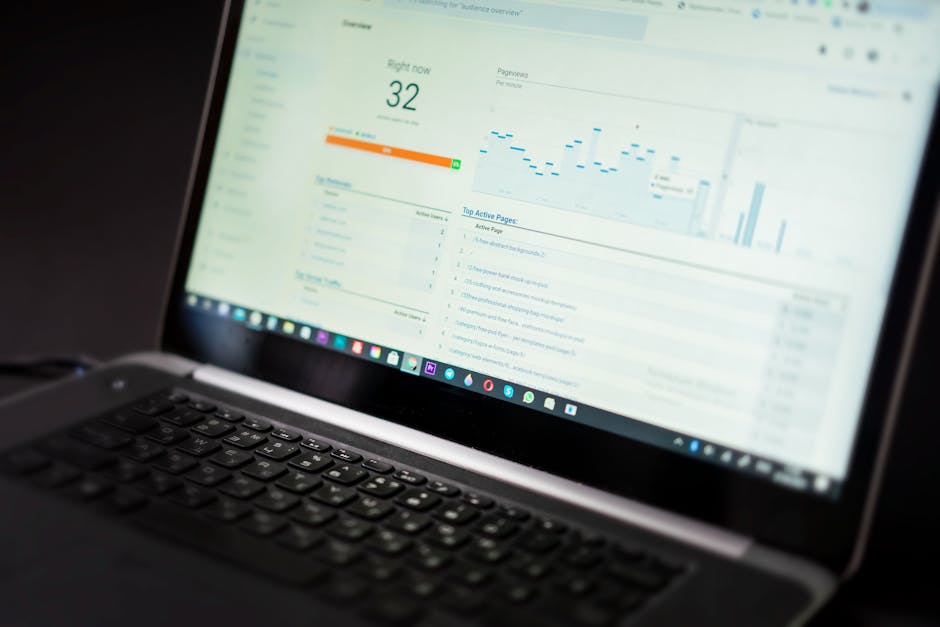
Dashboard view displaying various analytical metrics and user behavior data
CONVERSION RATE OPTIMISATION explained: conversion optimisation vs. paid growth
Conversion Rate Optimisation (CRO) and paid growth represent two distinct yet complementary strategies for business expansion. Paid growth focuses on increasing website traffic through paid channels like Google Ads and social media campaigns. While essential for visibility, merely driving traffic without an optimised conversion funnel can be akin to pouring water into a leaky bucket, significantly diminishing ROI. CRO, in contrast, concentrates on fixing that ‘leaky bucket’ by enhancing the website’s ability to convert existing traffic into customers. It’s about maximising the value of every visitor, thereby improving the efficiency of all marketing spend. Investing in CRO before or alongside paid growth ensures that when you do scale your ad spend, you’re doing so with a highly efficient system, leading to higher conversion rates and a more sustainable, profitable path to business growth, distinguishing itself from purely traffic-driven approaches.

Comparison chart highlighting the differences between conversion optimisation and paid growth strategies
When to focus on CRO before scaling paid channels
For most businesses, particularly Sydney startups, it is strategically advantageous to focus on Conversion Rate Optimisation before significantly scaling paid channels. If your website has a low conversion rate, increasing your ad spend will only lead to higher cost per acquisition (CPA) and wasted budget. Imagine doubling your advertising budget when only 1% of your visitors convert; you’ll still only convert 1% of your new, more expensive traffic. Instead, investing in CRO first to achieve a higher conversion rate—say, from 1% to 3%—means that when you eventually scale your paid channels, each visitor is three times more likely to convert. This foundational approach ensures that every marketing dollar is spent more effectively, leading to a much higher ROI and more sustainable growth, transforming browsers into loyal customers.

Graph showing the impact of CRO on cost per acquisition before scaling paid advertising
Why prioritise CRO before scaling marketing spend to maximise growth
Prioritising Conversion Rate Optimisation (CRO) before aggressively scaling marketing spend is a critical strategic decision for businesses aiming to maximise growth and ensure higher ROI. Without an optimised conversion funnel, increased marketing investment merely amplifies existing inefficiencies, leading to inflated acquisition costs and suboptimal revenue. CRO ensures that your website is a finely tuned machine, ready to convert potential customers effectively once they arrive. This approach significantly improves the return-on-ad-spend (ROAS) and increases the overall profitability of your digital campaigns. It’s about building a robust foundation, ensuring that every additional visitor gained through marketing efforts has the best possible chance to become a valuable customer, thereby leading to sustained business growth rather than just a temporary spike in traffic.
Diagram illustrating the synergistic relationship between CRO and marketing spend for optimal growth
How a data-driven approach boosts ROAS and revenue
A data-driven approach to CRO is the cornerstone of boosting ROAS and driving substantial revenue growth. By meticulously analysing user data, website interactions, and conversion metrics, businesses can identify precise areas of friction within the customer journey. This rigorous analysis provides data-driven insights that inform strategic experiments and testing. For instance, A/B testing different call-to-action placements or refining product page layouts based on heatmaps can directly lead to higher conversion rates. When conversion rates improve, the effectiveness of every marketing dollar spent automatically increases, translating into a higher ROAS. This scientific methodology ensures that every optimisation effort is quantifiable and directly contributes to the business’s financial objectives, turning potential leads into actual sales and ensuring sustained profitability.
Scrubbing data and using conversion metrics to inform experiments
Effective CRO relies heavily on accurately scrubbing data and leveraging reliable conversion metrics to inform targeted experiments. ‘Scrubbing data’ involves cleaning and validating raw data to ensure its integrity and relevance, removing anomalies or inaccuracies that could skew insights. Once clean, this data provides a clear picture of user behaviour, highlighting conversion leaks and potential areas for improvement. Conversion metrics, such as bounce rate, average session duration, and specific goal completions, then serve as benchmarks for hypothesis generation. For instance, if data shows a high exit rate on a particular page, an experiment might involve A/B testing a revised layout or copy on that page. This data-driven approach minimises guesswork, allowing for precise, impactful testing that genuinely improves conversion rates and optimises ROI.
Visual representation of data cleaning process, highlighting removal of irrelevant data points
Impact on Return-On-Ad-Spend (ROAS) and digital marketing strategy
Achieving sustainable growth isn’t just about fleeting wins; it’s about systematically improving website conversions to secure long-term results. CRO provides the framework for this by fostering a culture of continuous improvement, where user experience (UX) is consistently refined based on ongoing data and user feedback. Unlike temporary marketing pushes, optimising website performance creates lasting value, making every future visitor more likely to convert. This sustained focus on enhancing the customer journey not only drives higher conversion rates but also builds stronger brand loyalty and reduces the overall cost of customer acquisition over time. For businesses in Sydney, this means transforming their digital presence into a highly efficient revenue-generating machine that consistently outperforms competitors, contributing significantly to long-term business growth and a stronger market position.
Short-term traffic vs long-term maximising ROI
Authentic user experience improvements, driven by rigorous CRO efforts, extend their benefits far beyond initial conversions to significantly impact customer retention. When a website offers a seamless, intuitive, and satisfying experience, customers are more likely to return, make repeat purchases, and become loyal advocates for the brand. Addressing customer pain points through UX enhancements, such as simplifying navigation, improving site speed, or personalising content, fosters trust and positive sentiment. This not only increases conversion rates but also reduces churn and enhances customer lifetime value, proving that a focus on UX is a long-term investment in customer relationships. Ultimately, a customer-centric CRO approach builds a foundation for lasting engagement and sustainable business growth, ensuring that satisfied customers continue to drive revenue and referrals.
Infographic showing the correlation between improved user experience and increased customer retention rates
CRO versus Digital Marketing Agencies: clarifying agency services
The distinction between CRO and general digital marketing agencies is often blurred, leading to confusion for businesses seeking specialised services. While many digital marketing agencies offer a broad spectrum of services, including SEO, PPC, and social media, their CRO capabilities might be limited to basic website adjustments. A dedicated CRO agency, conversely, specialises in the intricate science of conversion rate optimisation, employing advanced methodologies like A/B testing, multivariate testing, and deep user behaviour analysis. Their core focus is on enhancing the efficiency of your website to convert existing traffic into customers, rather than solely generating new traffic. Understanding this difference is crucial for Sydney businesses to choose the right partner, ensuring their specific conversion goals are met with expert precision and a data-driven approach that consistently yields higher ROI.

Comparison table contrasting services offered by general digital marketing agencies vs. dedicated CRO agencies
Impact on Return-On-Ad-Spend (ROAS) and digital marketing strategy
Businesses should consider hiring a dedicated CRO agency or CRO experts when they are already generating significant website traffic but struggling to convert it into sales or leads effectively. If your marketing spend is high but your ROI is stagnating, or if you suspect there are significant conversion leaks in your sales funnel, it’s a clear signal for expert intervention. CRO professionals possess specialised knowledge in areas like UX research, A/B testing, and data analysis that most general digital marketing agencies might not prioritise. They conduct deep-dive user-experience audits, analyse intricate behavioural data, and design targeted experiments to identify and rectify conversion bottlenecks. This specialised focus is critical for achieving substantial and sustainable improvements in conversion rates, ultimately leading to a higher ROI and more efficient revenue generation from your existing website visitors.

Flowchart guiding businesses on when to engage CRO specialists versus general marketing agencies
Short-term traffic vs long-term maximising ROI
Dedicated CRO agency services encompass a comprehensive suite of solutions focused purely on increasing conversion rates. These typically include in-depth conversion optimisation audits, where experts conduct a thorough site audit to uncover technical issues, usability problems, and strategic misalignments. UX design forms a crucial component, involving the redesign of critical pages, user journeys, and interfaces to reduce friction and enhance user satisfaction. Crucially, A/B testing support is central to their offering, enabling hypothesis-driven experiments to validate changes and measure their impact on conversion metrics. These agencies often employ personalisation specialists to tailor experiences for different user segments, alongside experts in analytics to scrub data and set up robust tracking systems. This holistic approach ensures every aspect of the website is geared towards maximising conversions and delivering a measurable ROI.

Infographic detailing various services provided by a CRO agency, including UX, A/B testing, and analytics
Choosing between full-service digital marketing agency and Australian CRO agency
The choice between a full-service digital marketing agency and a specialised Australian CRO agency depends largely on your business’s immediate needs and growth objectives. A full-service agency excels at managing diverse marketing channels to drive website traffic, from SEO to paid ads. However, their CRO efforts might be broad rather than deeply specialised. An Australian CRO agency, on the other hand, dedicates its expertise to optimising conversion rates for existing traffic, employing advanced data analysis, UX research, and rigorous A/B testing methodologies tailored for the local market. If your primary challenge is converting existing traffic into revenue, a CRO agency offers the focused expertise required to fix conversion leaks and significantly boost your ROI. If you need comprehensive traffic generation alongside some conversion support, a full-service agency might be suitable, but for deep-dive conversion expertise, specialists are often superior.
Decision tree diagram helping businesses choose between different types of agencies
Track record and proven process: what to look for
When selecting a CRO agency, their track record and a clearly defined, proven process are paramount indicators of success. Look for agencies that can provide concrete case studies, quantifiable results, and testimonials from clients in similar industries, demonstrating their ability to consistently improve conversion rates and deliver a strong ROI. A robust CRO process typically involves distinct stages: thorough data gathering and analytics, comprehensive UX research, hypothesis generation, rigorous A/B testing, and continuous iteration. Agencies that openly share their methodology, detailing how they approach identifying conversion leaks, designing experiments, and measuring success, inspire confidence. Furthermore, inquire about their expertise in handling various platforms like Shopify conversion flows and their capability to provide detailed reporting on conversion metrics, ensuring transparency and accountability for the promised increase in conversions.
Checklist of key attributes to look for in a reputable CRO agency
Kaizen CRO approach: Data-Driven Conversion Rate Optimisation with a Proven Process
The Kaizen philosophy, synonymous with continuous improvement, perfectly encapsulates an effective Data-Driven Conversion Rate Optimisation approach. This methodology centres on making small, incremental changes based on rigorous analysis of user behaviour and conversion metrics, leading to significant, sustainable improvements over time. A proven process, such as the Kaizen CRO approach, starts with meticulous data gathering, moves into hypothesis generation based on identified conversion leaks, followed by strategic A/B testing, and concludes with analysis and implementation. This iterative cycle ensures that every change is validated by data, consistently pushing conversion rates higher and enhancing the overall user experience. It’s a proactive strategy for businesses seeking to maximise ROI and achieve long-term growth by transforming their website into a highly efficient conversion engine. This structured approach helps prevent costly missteps and ensures that every effort contributes to business goals.
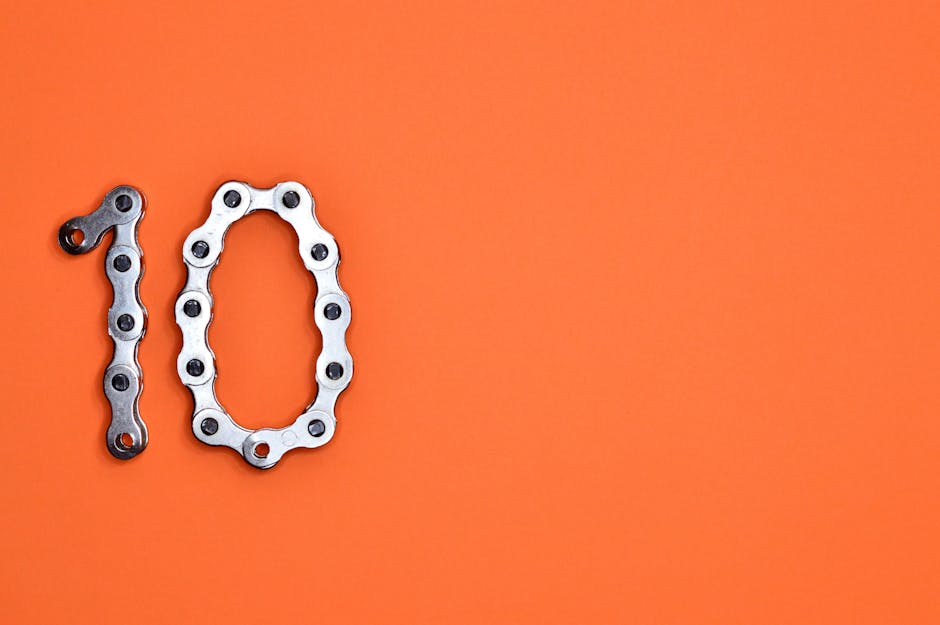
Graphic illustrating the continuous cycle of the Kaizen CRO approach, highlighting iterative improvements
Overview of Conversion Rate Optimisation Process and CRO Services
A robust Conversion Rate Optimisation process typically begins with an exhaustive discovery phase, encompassing comprehensive website audits and detailed analytics setup to uncover conversion leaks. This initial step is crucial for establishing a baseline and identifying high-impact areas for improvement. CRO services then extend to in-depth UX research, including user testing, heatmaps, and session recordings, to understand the ‘why’ behind user behaviour. Based on these data-driven insights, hypotheses are formulated, leading to the design and execution of A/B tests and other experiments. Ongoing monitoring of conversion metrics and thorough reporting ensure that the impact of each optimisation is measured and validated. This iterative approach, managed by CRO experts, focuses on continuous improvement to consistently boost conversion rates and deliver a significant ROI for businesses.
Data gathering & analytics, UX research and eCommerce audits
The foundational stages of any successful CRO initiative involve meticulous data gathering, advanced analytics setup, comprehensive UX research, and targeted eCommerce audits. Data gathering extends beyond basic traffic numbers to capture intricate user behaviour, leveraging tools that provide insights into clicks, scrolls, and navigation patterns. Advanced Analytics systems are then configured to track specific conversion metrics and user segments, allowing for granular analysis. UX research dives deeper, utilising surveys, user interviews, and usability testing to uncover qualitative insights and pain points that quantitative data alone might miss. For eCommerce sites, specialised eCommerce audits identify specific conversion leaks in product pages, checkout flows, and payment gateways. This holistic initial phase provides the data-driven insights necessary to form strong hypotheses and guide subsequent A/B testing, ensuring a solid foundation for increasing conversion rates and maximising ROI.

Composite image showing charts, user testing, and an audit checklist
A/B testing, CRO experimentation and personalisation specialists
Central to Conversion Rate Optimisation are rigorous A/B testing and CRO experimentation, often spearheaded by dedicated personalisation specialists. A/B tests involve creating two or more versions of a webpage element (e.g., headline, CTA button, layout) and presenting them to different segments of website visitors to determine which performs better in terms of conversion rates. This scientific approach removes guesswork, allowing data-driven decisions. CRO experimentation extends to multivariate testing, where multiple elements are tested simultaneously. Personalisation specialists then take these insights further, implementing tailored experiences for specific user segments based on their behaviour, demographics, or previous interactions. This advanced level of optimisation ensures that each visitor receives the most relevant content and offers, significantly boosting conversions and enhancing the user experience, contributing to a higher ROI for the business.
Screenshot of an A/B testing platform interface showing results of a live experiment
Track Record and CRO Expertise: serving remarkable results in Sydney
A strong track record and demonstrable CRO expertise are non-negotiable for agencies serving remarkable results in Sydney. Reputable CRO agencies will proudly present case studies showcasing significant improvements in conversion rates, increased ROI, and boosted revenue for their clients. This expertise isn’t just about understanding tools; it’s about a deep comprehension of user psychology, data analytics, and the nuances of various industry verticals. For instance, an agency might highlight how they redesigned a SaaS platform’s signup flow, reducing friction and increasing trial conversions by 25%, or how they optimised an eCommerce site’s checkout process, leading to a 15% reduction in cart abandonment. These measurable outcomes underscore their capability to transform website performance and contribute directly to business growth, making them invaluable partners for any Sydney startup focused on maximising its digital potential.

Testimonial snippets from satisfied clients showcasing increased conversion rates and revenue
Case study highlights: improving ecommerce conversion rate and ROAS
Compelling case study highlights are crucial for demonstrating an agency’s ability to deliver tangible results in improving ecommerce conversion rate and ROAS. For example, a successful case study might detail how an agency implemented a series of A/B tests on a retail client’s product pages, leading to a 10% uplift in ‘add to cart’ conversions by optimising image placement and call-to-action visibility. Another might showcase a fashion brand that saw a 20% increase in overall sales conversions after mobile optimisation efforts reduced checkout friction for smartphone users. These examples provide concrete evidence of how data-driven strategies, coupled with expert UX design and continuous testing, can translate directly into higher revenue and a significantly improved return-on-ad-spend (ROAS), validating the investment in specialised CRO services for an eCommerce site.
Infographic summarizing key metrics and achievements from a successful eCommerce CRO case study
Main Discussion: CRO Strategies and Agency Services to Maximise Growth in Sydney
To truly maximise growth in Sydney’s competitive digital landscape, businesses must embrace advanced Conversion Rate Optimisation (CRO) strategies and leverage expert agency services. This isn’t just about tweaking a few buttons; it involves a holistic, data-driven approach to understanding user behaviour, identifying critical conversion leaks, and systematically enhancing the entire customer journey. From in-depth website audits that pinpoint technical and UX issues to rigorous A/B testing and personalisation strategies, every element of a CRO campaign is designed to convert more website visitors into loyal customers. Engaging with specialised CRO experts ensures that your digital assets are not merely attracting traffic but are finely tuned machines for revenue generation, driving higher ROI and sustainable business growth through a relentless focus on improving conversion rates.

Overhead view of a vibrant Sydney skyline, symbolising business growth and digital presence
Comprehensive Website Audit and Ecommerce Audits to find conversion leaks
A comprehensive website audit is the critical first step in uncovering hidden conversion leaks that stifle growth and waste marketing spend. This rigorous process goes beyond superficial checks, delving into technical SEO aspects, usability, content effectiveness, and the overall user experience (UX). For eCommerce businesses, a specialised eCommerce audit meticulously scrutinises product pages, checkout flows, payment gateways, and mobile responsiveness to identify specific friction points. Imagine finding that a broken form field is preventing dozens of customer enquiries daily, or that slow page load times are causing potential customers to abandon their carts. These audits provide a detailed roadmap of areas requiring optimisation, highlighting where data-driven interventions can significantly boost conversion rates and improve ROI. For businesses seeking a partner to identify these crucial issues, exploring comprehensive digital marketing insights can provide valuable information.

Screenshot of a website audit report highlighting various technical and UX issues
Technical and UX checks that reveal lost revenue
Performing thorough technical and UX checks is paramount for revealing lost revenue opportunities on any website. Technical checks examine backend issues such as slow loading speeds, broken links, server errors, and mobile responsiveness, all of which can severely impede a user’s journey and lead to high bounce rates. For example, a complex JavaScript execution can significantly delay content rendering, making users impatient and increasing conversion leaks. UX checks, on the other hand, focus on the user’s interaction with the interface, evaluating navigation clarity, form usability, call-to-action effectiveness, and overall visual appeal. A confusing layout or an uninspiring headline can quickly deter a visitor from converting, costing valuable revenue. Together, these checks provide a holistic view, pinpointing precise areas where optimising website functionality and design can directly lead to higher conversion rates and improved ROI.
Infographic showcasing a checklist of essential technical and UX elements to audit
Examples of conversion leaks in e-commerce stores and Shopify conversion flows
For Shopify merchants, implementing specific conversion fixes and embracing robust ecommerce conversion rate optimisation tips can unlock significant revenue potential. Common fixes include simplifying the checkout process by reducing the number of steps, enabling guest checkout options, and clearly displaying shipping costs upfront. Optimising product pages with high-quality images, detailed descriptions, customer reviews, and clear calls-to-action (CTAs) like ‘Add to Cart’ are also crucial. Furthermore, leveraging exit-intent pop-ups with compelling offers, implementing urgency timers for sales, and ensuring seamless mobile optimisation can dramatically improve Shopify conversion rates. By continuously analysing analytics data, running A/B tests on product variants, and refining the customer journey based on user insights, businesses can transform their eCommerce site into a conversion powerhouse, driving higher sales and a better ROI from existing website traffic.

Mockup of an optimised Shopify product page highlighting key conversion elements
Prioritising fixes: quick wins vs. strategic improvements
Effective CRO involves a strategic approach to prioritising fixes, distinguishing between ‘quick wins’ and more substantial ‘strategic improvements.’ Quick wins are often minor adjustments—like tweaking a headline, changing a button colour, or simplifying a form field—that can yield immediate, albeit smaller, increases in conversion rates with minimal effort. These build momentum and demonstrate early ROI. Strategic improvements, however, involve more significant overhauls such as redesigning an entire sales funnel, implementing complex personalisation, or restructuring core website architecture. These require more resources and time but promise substantial, long-term boosts in conversion rates and overall revenue. A balanced CRO roadmap incorporates both, ensuring immediate gains while laying the groundwork for sustainable growth. This data-driven prioritisation ensures resources are allocated optimally for maximizing ROI and achieving business goals.

Quadrant chart categorising CRO fixes by effort and impact, showing quick wins versus strategic improvements
Dressed for Success: aligning landing pages with paid campaigns
Being ‘Dressed for Success’ in CRO means meticulously aligning landing pages with the expectations set by paid campaigns. A common conversion leak occurs when the messaging, visuals, or offer on a landing page doesn’t directly match the ad that brought the user there. This disconnect creates immediate confusion and mistrust, leading to high bounce rates and wasted marketing spend. For instance, if a Google Ad promises a 20% discount on specific products, the landing page must immediately feature that offer prominently. Effective landing page optimisation involves ensuring consistent branding, clear value propositions, and a direct path to the desired conversion action. By creating seamless transitions from ad to landing page, businesses can significantly improve conversion rates, boost their ROAS, and convert more browsers into buyers, ensuring every click is optimised for revenue.

Visual comparison of a well-aligned ad and landing page versus a misaligned one
Data Gathering & Analytics: scrubbing data and building analytical systems
At the core of any successful CRO strategy is meticulous data gathering and the establishment of robust analytical systems, starting with ‘scrubbing data.’ This crucial process involves cleaning, validating, and structuring raw user data to ensure its accuracy and relevance. Unscrubbed data can lead to skewed insights, misguided experiments, and ultimately, ineffective optimisation efforts. Building analytical systems means setting up advanced tracking, including custom events and goal completions, across all digital touchpoints. This allows businesses to monitor key conversion metrics, identify bottlenecks, and gain a holistic understanding of the customer journey. By ensuring the integrity of their data, businesses can make truly data-driven decisions, informing their A/B testing hypotheses and leading to significantly higher conversion rates and an improved ROI from their marketing spend.

Diagram illustrating the process of data scrubbing and integration into analytical platforms
Essential conversion metrics and behaviour data for CRO decision-making
For effective CRO decision-making, understanding essential conversion metrics and leveraging detailed behaviour data is non-negotiable. Key metrics include the overall conversion rate, bounce rate, exit rate, average session duration, and goal completion rates for specific actions. Beyond these, behaviour data, collected through tools like heatmaps, session recordings, and user surveys, provides qualitative insights into *why* users behave in certain ways. For example, a high exit rate on a pricing page combined with session recordings showing users hesitating at a particular feature comparison table reveals a clear conversion leak. Analysing this data helps pinpoint areas of friction, confusion, or disinterest. By combining quantitative metrics with qualitative behaviour data, businesses can develop targeted hypotheses for A/B testing, leading to data-driven strategies that significantly boost conversion rates and overall ROI.

Infographic detailing various conversion metrics and types of behaviour data
Setting up tracking, events and Monitor & Convert dashboards
A critical component of a data-driven CRO strategy involves meticulously setting up tracking, custom events, and comprehensive Monitor & Convert dashboards. Accurate tracking, typically through Google Analytics 4 or similar platforms, ensures every user interaction, from page views to specific button clicks, is recorded. Implementing custom events allows businesses to monitor granular actions relevant to their conversion goals, such as ‘added to cart,’ ‘video played,’ or ‘form field interacted.’ These events feed into bespoke Monitor & Convert dashboards, which provide real-time visualisations of key conversion metrics, user behaviour, and the performance of ongoing A/B tests. Such dashboards empower teams to quickly identify conversion leaks, track the impact of optimisations, and make informed, agile decisions to continuously improve conversion rates and maximise ROI, proving the efficacy of their Conversion Rate Optimisation efforts.
Impact on Return-On-Ad-Spend (ROAS) and digital marketing strategy
Data-driven experimentation is the bedrock of successful CRO, and it starts with rigorously cleaning data before A/B testing. Dirty or inconsistent data can lead to erroneous conclusions, wasting valuable resources and potentially harming conversion rates. This ‘cleaning’ process involves identifying and removing outliers, addressing missing values, and ensuring data consistency across all sources. For instance, if your analytics data includes bot traffic or internal team activity, it must be filtered out to prevent biased samples in your A/B tests. Only with clean, reliable data can hypotheses be accurately formed and tested, ensuring that any observed uplift in conversion rates is statistically significant and attributable to the changes implemented. This meticulous preparation is crucial for generating actionable insights and achieving a genuine ROI from your conversion optimisation efforts.

Illustration of data filtering and cleaning process before an A/B test is conducted
Short-term traffic vs long-term maximising ROI
To ensure the integrity of A/B testing and the validity of CRO experimentation, it is paramount to avoid biased samples and guarantee statistically sound results. A biased sample occurs when the groups being tested are not truly representative or are exposed to external factors that skew the outcome. For instance, running an A/B test during a major holiday sale could introduce a bias, as user behaviour might not reflect typical patterns. Ensuring statistically valid experiments involves calculating appropriate sample sizes to detect meaningful differences in conversion rates, maintaining consistent traffic distribution, and running tests for a sufficient duration to account for weekly cycles. Overly short tests or insufficient traffic can lead to false positives or negatives, undermining the entire Conversion Rate Optimisation effort. Adhering to these principles guarantees that results are reliable and directly contribute to higher ROI and sustainable business growth.
Diagram illustrating how to achieve statistically significant results in A/B testing with unbiased samples
A/B Testing and CRO Experimentation: designing experiments that deliver proven results
A/B testing and CRO experimentation are indispensable tools for designing experiments that consistently deliver proven results in Conversion Rate Optimisation. This scientific methodology involves creating alternative versions of a webpage or element and then showing them to different segments of your website visitors to determine which version performs best in terms of conversion rates. The goal is not merely to change things, but to test hypotheses derived from data-driven insights. Each experiment should be meticulously planned, with clear objectives, defined metrics, and a controlled environment to ensure validity. Successful experimentation systematically removes guesswork, allowing businesses to make informed decisions that directly contribute to a higher ROI and sustained business growth by continuously improving the user experience and eliminating conversion leaks.
Visual representation of an A/B test setup, showing two different versions of a landing page
Impact on Return-On-Ad-Spend (ROAS) and digital marketing strategy
Adhering to best practices for A/B testing is crucial for effective conversion optimisation, ensuring that experiments yield reliable and actionable insights. This involves developing clear, hypothesis-driven experiments based on identified conversion leaks or opportunities from data analysis. Sample sizing calculations are vital to determine the minimum number of participants required to achieve statistical significance, preventing premature conclusions. Furthermore, tests should be run for a sufficient duration to account for daily and weekly user behaviour patterns, avoiding ‘peeking’ at results too early. It’s also critical to test one primary variable at a time to isolate the impact of changes. By meticulously following these guidelines, businesses can conduct robust A/B tests that truly reveal which changes lead to higher conversion rates, ultimately maximising ROI and providing concrete data for continuous improvement.

Infographic outlining key best practices for conducting effective A/B tests
Short-term traffic vs long-term maximising ROI
The foundation of impactful CRO experimentation lies in hypothesis-driven experiments, meticulous sample sizing, and achieving statistical confidence. Every A/B test should start with a clear hypothesis, such as “Changing the CTA button colour to orange will increase click-through rates by X% because it stands out more.” This provides a measurable objective. Accurate sample sizing is then crucial, ensuring enough website visitors are included in each test variant to detect a statistically significant difference if one exists. Using tools that calculate the required sample size based on expected uplift and desired confidence level prevents wasting resources on inconclusive tests. Finally, reaching a high level of statistical confidence (e.g., 95%) ensures that observed changes in conversion rates are not due to random chance, providing reliable data-driven insights for achieving higher ROI and genuine business growth.

Graphic illustrating the components of a scientific A/B test: hypothesis, variants, sample size, and confidence level
From experiments to impact: measuring ROAS and revenue uplift
The ultimate goal of CRO experimentation is to translate proven insights into measurable business impact, specifically by increasing ROAS and demonstrating significant revenue uplift. Once an A/B test concludes with a statistically significant winner, the optimised version is implemented, and its long-term effects on conversion rates are monitored. It’s crucial to link these conversion improvements directly to financial metrics. For example, a 15% increase in form submissions, combined with the average value of each lead, can be projected into actual revenue uplift. Similarly, if an eCommerce site increases its checkout conversion rate by 5%, this directly translates to higher sales volume and, consequently, a better Return-On-Ad-Spend (ROAS). Comprehensive reporting frameworks are essential to clearly articulate these gains, showcasing how CRO efforts contribute directly to the bottom line and justify continued investment in optimisation.

Charts showing pre- and post-experiment ROAS and revenue figures
Reporting frameworks to prove conversion improvements
Establishing robust reporting frameworks is essential to definitively prove conversion improvements and demonstrate the tangible ROI of CRO efforts. These frameworks should go beyond simple percentage uplifts, providing context through segment analysis, customer lifetime value (CLV) impact, and attribution models that clearly link optimisations to revenue gains. Effective reports typically include dashboards that track key conversion metrics over time, comparative analyses of A/B test results, and a financial breakdown of the revenue uplift achieved. For instance, a report might detail how a series of UX enhancements led to a X% increase in average order value and a Y% reduction in cart abandonment, directly translating to Z amount in additional revenue. Clear, transparent reporting ensures stakeholders understand the value of CRO and reinforces its role in achieving sustainable business growth.
Example of a detailed CRO reporting dashboard showing various performance indicators and financial impact
UX Design, Personalisation Specialists and Mobile Optimisation for authentic user experience
Crafting an authentic user experience (UX) is paramount for Conversion Rate Optimisation, often requiring the expertise of UX design professionals, personalisation specialists, and dedicated mobile optimisation strategies. Good UX design focuses on creating intuitive, enjoyable, and efficient user journeys that reduce friction and guide users effortlessly towards conversion. This goes hand-in-hand with personalisation, where specialists tailor content, offers, and interfaces based on individual user behaviour, demographics, or preferences, making each interaction more relevant and compelling. Crucially, mobile optimisation ensures that this seamless experience extends to all devices, as a significant portion of website visitors now access sites via smartphones. By integrating these elements, businesses can build trust, enhance user satisfaction, and dramatically improve conversion rates across all platforms, fostering a loyal customer base and robust business growth.
Composite image of mobile-optimized website, personalised content, and UX wireframes
Design patterns that increase website conversions and customer retention
Implementing proven design patterns is a powerful strategy to significantly increase website conversions and enhance customer retention. These patterns are established solutions to common UX problems, such as clear visual hierarchy that guides the user’s eye, intuitive navigation menus that prevent confusion, and consistent branding that builds trust. For example, using prominent, contrasting call-to-action buttons, employing social proof elements like customer testimonials, and simplifying complex forms are all design patterns proven to reduce friction and encourage desired actions. When these elements are strategically applied, they not only boost immediate conversion rates but also contribute to a positive user experience, making customers more likely to return. This continuous refinement based on user insights and data-driven design principles reinforces loyalty and fosters sustainable business growth through repeated transactions and referrals.

Infographic showcasing various effective UX design patterns for conversion optimisation
Personalisation strategies for e-commerce businesses and remarketing
Advanced personalisation strategies are game-changers for e-commerce businesses and remarketing campaigns, allowing for highly targeted Conversion Rate Optimisation. Instead of a one-size-fits-all approach, personalisation specialists tailor website content, product recommendations, and offers based on individual user behaviour, purchase history, and demographic data. For example, a returning customer might see products similar to their previous purchases or receive a special discount on items left in their cart. In remarketing, personalisation enables highly relevant ad creative and landing page experiences for users who have previously interacted with the site but haven’t converted. This hyper-relevance significantly increases the likelihood of conversion, reduces cost per acquisition, and improves the overall ROI of marketing spend by converting more browsers into buyers through a deeply customer-centric approach.
Screenshot of a personalised e-commerce homepage with tailored product recommendations
Mobile optimisation to dominate online: reducing friction on phones
In today’s digital landscape, mobile optimisation is not merely a feature but a necessity to dominate online, primarily by reducing friction on phones and driving higher conversion rates. With a vast majority of users accessing websites via mobile devices, a clunky, slow, or difficult-to-navigate mobile experience is a major conversion leak. Effective mobile optimisation involves responsive design, fast loading times, touch-friendly interfaces, and simplified checkout processes. Consider a user trying to purchase a product on a mobile device; if they encounter tiny buttons, non-responsive layouts, or endless scrolling, they are highly likely to abandon their journey. Prioritising mobile UX ensures that every website visitor, regardless of their device, experiences a seamless and enjoyable interaction, directly translating to improved conversion rates and a healthier ROI for the business. Explore best practices and case studies for effective mobile optimisation by visiting expert digital solutions for modern websites.
Mockup of a website displayed flawlessly on various mobile devices and tablets
Touch, speed and layout changes that improve Shopify conversion rates
For Shopify stores, specific touch, speed, and layout changes are paramount for dramatically improving conversion rates on mobile devices. Touch optimisation means ensuring all clickable elements, especially buttons and links, are adequately sized and spaced for easy tapping, preventing frustrating mis-clicks. Page speed is another critical factor; even a one-second delay in loading time can significantly increase bounce rates and reduce conversions, necessitating image optimisation, code minification, and efficient server responses. Layout changes involve simplifying product pages for smaller screens, prioritising essential information, and ensuring a clear, linear flow through the checkout process. Removing unnecessary pop-ups or elements that obscure content on mobile can also reduce friction. By focusing on these mobile-specific UX enhancements, Shopify businesses can significantly boost their conversion rates and provide a superior user experience, directly impacting their revenue and ROI.

Side-by-side comparison of a slow, unoptimised mobile Shopify page versus a fast, optimised one
CRO Agency Services, Track Record and how to start: free consultation to serving results
Engaging with a CRO agency offers a clear pathway from initial curiosity to serving remarkable results, beginning with a free consultation. These initial discussions allow businesses to articulate their pain points, current conversion rates, and business goals, enabling the agency to provide a preliminary assessment of potential conversion leaks. A reputable agency will then outline its comprehensive CRO services, detailing how their data-driven process, from in-depth audits to A/B testing and UX design, will be tailored to meet specific objectives. Their track record, evidenced by case studies and testimonials, provides confidence in their ability to deliver a strong ROI. The journey often progresses through structured phases, from onboarding and data integration to continuous experimentation and performance reporting, ensuring a transparent and results-oriented partnership focused on boosting conversions and achieving sustainable business growth.
Handshake graphic symbolising the start of a partnership between a business and a CRO agency
What Conversion Rate Optimisation Services include: audits, UX research, experiments
Comprehensive Conversion Rate Optimisation Services typically include a multi-faceted approach starting with meticulous audits, in-depth UX research, and systematic experimentation. Audits encompass technical performance, usability, content analysis, and competitive benchmarking, pinpointing critical conversion leaks. UX research delves into understanding user behaviour through heatmaps, session recordings, surveys, and user interviews, providing qualitative data to complement quantitative analytics. The experimentation phase involves designing and executing A/B tests and multivariate tests on various website elements—from headlines and call-to-actions to entire page layouts—to validate hypotheses and identify what truly drives higher conversion rates. These services are delivered by CRO experts who use data-driven insights to continually refine and optimise the user journey, ensuring a maximum ROI on marketing spend and sustainable business growth.

Mind map illustrating the interconnected components of CRO services
Conversion Rate Optimisation Experts: roles, timelines and deliverables
Conversion Rate Optimisation Experts play pivotal roles in transforming website performance, operating within structured timelines and delivering tangible outcomes. A typical team might include an Analytics Specialist for data gathering and reporting, a UX Researcher for user insights, a CRO Strategist for hypothesis generation and experiment design, and a Developer for implementing changes and setting up A/B tests. Timelines vary depending on the complexity of the project, but generally involve an initial audit phase (2-4 weeks), followed by ongoing experimentation cycles (4-8 weeks per cycle). Key deliverables include detailed audit reports, A/B test plans and results, UX improvement recommendations, and regular performance dashboards showcasing uplift in conversion rates and ROI. These experts focus relentlessly on addressing conversion leaks, ensuring that every effort translates into measurable improvements and significant revenue growth for the business.

Team members collaborating on a CRO project, illustrating their distinct roles
Core concepts: conversion metrics, UX research and website optimisation
The process of working with a dedicated CRO agency often begins with an open invitation: ‘Ready to chat? Contact us’ – emphasising a no-obligations approach. This initial engagement is designed to be a risk-free opportunity for businesses to discuss their current challenges with conversion rates and explore how Conversion Rate Optimisation can address their specific pain points. During this consultation, the agency typically offers a preliminary assessment, highlighting potential conversion leaks and outlining a general framework for improvement. It’s a chance for businesses to understand the agency’s data-driven methodology, explore their track record, and gauge compatibility before committing to any services. This transparent, pressure-free initiation ensures that businesses can confidently explore the potential for higher ROI and sustainable growth through expert CRO intervention.

A professional smiling, inviting dialogue, with a ‘Contact Us’ button
Behaviour data, analytical systems and how to measure success
The ‘Click, Connect & Convert’ approach perfectly encapsulates the streamlined process for client onboarding and CRO campaign kickoff. After initial discussions, the ‘Click’ phase involves the client providing necessary data access and sharing historical marketing insights. The ‘Connect’ phase focuses on integrating the agency’s team with the client’s, setting up communication channels, and defining clear business goals and KPIs for conversion rates. This is where detailed planning begins, including comprehensive site audits, in-depth UX research, and the development of the initial CRO experimentation roadmap, specifically targeting identified conversion leaks. Finally, the ‘Convert’ phase kicks off with the implementation of the first round of A/B tests and optimisations. This structured, collaborative start ensures all stakeholders are aligned, data is meticulously integrated, and the campaign is poised to deliver significant improvements in conversion rates and ROI from the outset.

Graphic illustrating three interlocking gears representing Click, Connect, and Convert stages
Preparing for success: data access, assets and Dressed for Success checklist
Preparing for success with a CRO agency involves ensuring essential prerequisites are met, primarily focusing on data access, relevant assets, and a ‘Dressed for Success’ checklist. Granting the agency full access to analytics platforms (e.g., Google Analytics, Google Tag Manager), CRM systems, and advertising accounts (Google Ads, Facebook Ads) is crucial for comprehensive data gathering and analysis. Providing high-resolution brand assets, content guidelines, and any existing UX research or customer feedback helps the agency quickly understand your brand and target audience. The ‘Dressed for Success’ checklist might include a review of current marketing strategies, identification of key landing pages, and a clear articulation of business goals for conversion rates. This proactive preparation streamlines the onboarding process, allows CRO experts to hit the ground running, and ensures that data-driven strategies are implemented efficiently for maximum ROI.

Checklist graphic detailing items needed for a successful CRO campaign kickoff
How to get started and begin serving remarkable results
To get started and begin serving remarkable results through Conversion Rate Optimisation, the first actionable step is often a complimentary consultation with a reputable CRO agency. This allows for a preliminary assessment of your current website performance, discussion of your business goals, and identification of potential conversion leaks. Following this, the agency will typically propose a tailored plan, detailing how their data-driven approach—including audits, UX research, and A/B testing—will be implemented. The key is to move from theoretical discussions to practical, measurable steps. By committing to a structured CRO process, granting necessary data access, and fostering a collaborative partnership, businesses can quickly transition from underperforming conversion rates to achieving significant ROI and sustainable business growth, demonstrating the immediate value of expert intervention.
Animated graphic showing a business transforming from low to high conversion rates
Conclusion: Prioritise CRO to Maximise ROI and Grow Your Sydney Startup
In conclusion, prioritising Conversion Rate Optimisation (CRO) is not merely an optional enhancement but a fundamental imperative for Sydney startups aiming to maximise ROI and achieve sustainable growth. By systematically identifying and rectifying conversion leaks, businesses can transform their existing website traffic into a powerful engine for revenue generation, dramatically improving the efficiency of their marketing spend. Embracing a data-driven approach, from meticulous audits and UX research to rigorous A/B testing and personalisation strategies, ensures that every optimisation effort directly contributes to higher conversion rates and a stronger bottom line. This strategic focus ensures that your digital assets are not just visible, but truly effective, creating loyal customers and cementing your position in the competitive digital landscape. Investing in CRO is investing in a future of exponential, intelligent business growth.

Stylised graphic of a graph trending upwards, signifying growth and increased ROI
Key takeaways: fix conversion leaks first to maximise growth and Return-On-Ad-Spend
The paramount takeaway for any Sydney startup is to fix conversion leaks first to maximise growth and significantly boost Return-On-Ad-Spend (ROAS). Continuously pouring money into attracting website traffic without an optimised conversion funnel is akin to trying to fill a bucket with a hole in it. By prioritising Conversion Rate Optimisation, businesses ensure that every visitor has the highest chance of converting, making all marketing efforts infinitely more efficient. This foundational approach not only leads to higher conversion rates but also lowers the cost per acquisition, directly improving ROAS. It’s a strategic shift from merely generating traffic to intelligently converting it, leading to sustainable business growth and a much stronger competitive advantage in the digital marketplace, ultimately securing higher ROI.
Practical checklist for website optimisation and conversion optimisation initiatives
A practical checklist is invaluable for guiding website optimisation and conversion optimisation initiatives, ensuring no critical steps are missed. This checklist should include: conducting a comprehensive technical and UX audit, setting up advanced analytics tracking with custom events, performing in-depth UX research (heatmaps, session recordings, surveys), creating a hypothesis-driven A/B testing roadmap, implementing mobile optimisation best practices, and developing personalisation strategies. Furthermore, regular monitoring of conversion metrics, clear reporting on ROI, and a commitment to iterative improvements are essential. By methodically working through such a checklist, businesses can systematically identify and address conversion leaks, leading to a consistent increase in conversion rates, a better user experience, and a much higher ROI on their digital investments, driving meaningful business growth.

Interactive checklist for CRO implementation, with checkmarks next to completed items
Immediate actions: audits, A/B tests and quick UX fixes
For businesses keen to see immediate impact, initiating audits, A/B tests, and quick UX fixes are critical immediate actions in their Conversion Rate Optimisation journey. Start with a rapid site audit to uncover obvious technical glitches or usability snags that can be addressed quickly, such as broken links or unclear calls-to-action. Simultaneously, identify high-traffic, low-converting pages for immediate A/B tests; even simple changes to headlines or button copy can yield quick wins in conversion rates. Implement swift UX fixes like improving form field labels, increasing font legibility, or enhancing image loading speed. These early interventions, while not always comprehensive, provide valuable data and demonstrate immediate ROI, building momentum and confidence for more extensive, data-driven strategies and sustainable business growth, turning those initial efforts into sustained conversion performance.

Graphic showing three immediate actions: audit icon, A/B test icon, and a wrench for fixes
Impact on Return-On-Ad-Spend (ROAS) and digital marketing strategy
Conversion Rate Optimisation (CRO) serves as a powerful engine for driving long-term maximising ROI for Sydney e-commerce businesses by systematically enhancing the efficiency of every customer interaction. Unlike short-lived marketing campaigns, CRO builds an enduring asset: a highly optimised, customer-centric website that consistently turns visitors into buyers. By continuously addressing conversion leaks, refining the user experience (UX), and implementing data-driven personalisation, e-commerce sites can achieve sustained increases in conversion rates, average order value, and customer lifetime value. This translates into a perpetually improving Return-On-Ad-Spend (ROAS) and a stronger competitive position, ensuring that every dollar invested in traffic acquisition yields increasing returns. The cumulative effect of these incremental improvements secures substantial revenue growth and fosters a loyal customer base, ensuring a robust future.
Bar chart showing long-term ROI growth attributed to continuous CRO efforts
Short-term traffic vs long-term maximising ROI
The journey from initial CRO experiments to achieving robust customer retention and growing your brand is a strategic progression. Successful A/B tests and data-driven optimisations don’t just boost immediate conversion rates; they create a more intuitive and satisfying user experience. This enhanced UX reduces friction, builds trust, and ultimately leads to happier customers who are more likely to return for repeat purchases. By continuously refining the customer journey and addressing pain points, businesses foster loyalty, transforming one-time buyers into loyal advocates. This ripple effect extends to brand growth, as satisfied customers provide positive reviews and word-of-mouth referrals. Thus, CRO is an investment in the entire customer lifecycle, proving that optimising conversions is directly linked to cultivating a strong, enduring brand identity and sustainable business growth.

Lifecycle diagram illustrating the progression from experiments to brand growth and customer loyalty
Measure Success: Monitor & Convert, conversion metrics and proving ROAS uplift
Measuring success in CRO is intrinsically linked to robust Monitor & Convert systems, meticulous tracking of conversion metrics, and definitively proving ROAS uplift. It’s not enough to implement changes; the true value lies in quantifying their impact on the bottom line. Establishing custom dashboards that track key performance indicators (KPIs) like conversion rates, average order value, customer acquisition cost, and ultimately, Return-On-Ad-Spend (ROAS) provides a clear picture of success. This data-driven approach allows businesses to attribute revenue gains directly to specific Conversion Rate Optimisation efforts, demonstrating a tangible ROI. Without accurate measurement and reporting, even the most brilliant optimisations remain unproven. Therefore, integrating advanced analytics and continuous monitoring is crucial for validating CRO strategies and sustaining long-term business growth.

Screenshot of a ‘Monitor & Convert’ dashboard displaying real-time ROAS and conversion data
Impact on Return-On-Ad-Spend (ROAS) and digital marketing strategy
To effectively measure success during a CRO campaign, tracking a comprehensive set of Key Performance Indicators (KPIs) is essential. Beyond the overarching conversion rate, crucial KPIs include bounce rate, exit rate on key pages, average session duration, and specific goal completion rates for micro-conversions (e.g., newsletter sign-ups, demo requests). For e-commerce, average order value (AOV), customer lifetime value (CLV), and cart abandonment rates are vital. Critically, these quantitative metrics should be combined with qualitative insights from user feedback and UX research. Tracking these KPIs enables businesses to identify conversion leaks, assess the impact of A/B tests, and provide concrete evidence of ROI. Regular reporting on these metrics ensures transparency and continuous improvement, driving sustainable business growth through data-driven Conversion Rate Optimisation.
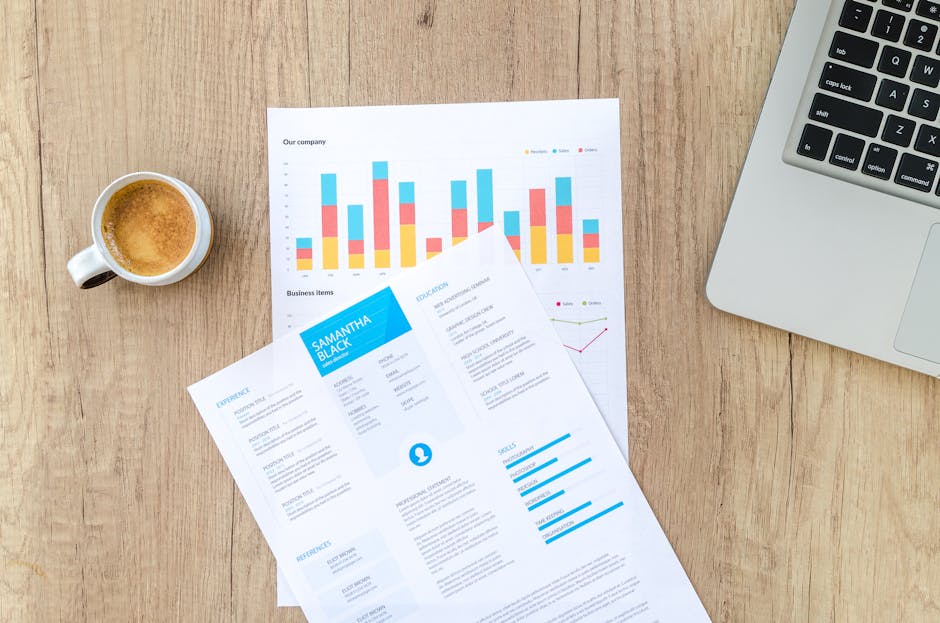
Infographic listing and defining essential CRO KPIs for various business types
Short-term traffic vs long-term maximising ROI
Effective CRO success hinges on precise attribution, a consistent reporting cadence, and the ability to unequivocally demonstrate proven results. Attribution models help determine which touchpoints or CRO efforts contributed to a conversion, providing clarity on the ROI of specific optimisations and helping to uncover elusive conversion leaks. A regular reporting cadence—weekly, bi-weekly, or monthly—ensures that performance is continuously monitored, allowing for agile adjustments and timely interventions. These reports must go beyond raw data, translating complex analytics into clear, actionable insights that showcase uplift in conversion rates, revenue gains, and improved ROAS. By presenting this data in a transparent, easy-to-understand format, businesses can confidently justify their investment in Conversion Rate Optimisation and communicate its direct impact on overall business growth and profitability to all stakeholders.
Diagram illustrating different attribution models and their impact on reporting CRO results
Using behaviour data and analytical systems to sustain improvements
Sustaining CRO improvements for long-term business growth relies heavily on continuously leveraging behaviour data and advanced analytical systems. It’s not a one-off project but an ongoing cycle of learning and adaptation. Behavioural data, collected through heatmaps, session recordings, and user surveys, provides real-time insights into evolving user preferences and emerging conversion leaks. Robust analytical systems enable constant monitoring of key conversion metrics, ensuring that previous optimisations continue to perform optimally and flagging any new areas of friction. This proactive, data-driven approach allows businesses to stay ahead of market changes, maintain a superior user experience (UX), and continuously refine their sales funnel. By embedding this culture of iterative improvement, businesses can ensure sustained increases in conversion rates and a consistently higher ROI from all their digital efforts.
Graphic showing the continuous loop of data analysis, hypothesis, experimentation, and implementation for sustained CRO
Choosing the right partner: Australian CRO agency vs digital marketing agency
Choosing the right partner for Conversion Rate Optimisation is a critical decision, often boiling down to an Australian CRO agency versus a broader digital marketing agency. While digital marketing agencies offer a wide array of services including SEO and PPC to drive website traffic, their CRO expertise might be more general. A specialised Australian CRO agency, however, dedicates its entire focus to improving conversion rates for your existing website visitors, leveraging deep expertise in UX research, A/B testing, and data analysis tailored to the local market nuances. If your primary goal is to convert more of your current traffic into revenue and achieve a higher ROI on your existing marketing spend, a dedicated CRO agency is likely the more effective choice. They bring a laser-focused approach to identify and fix conversion leaks, ensuring maximum efficiency and sustainable business growth.
Questions to ask CRO Experts and evaluating an agency’s Track Record
When engaging with potential CRO experts or evaluating an agency’s track record, asking precise questions is crucial to ensure you select the right partner. Inquire about their methodology for identifying conversion leaks, how they conduct UX research, and their approach to A/B testing. Ask for specific case studies that demonstrate measurable increases in conversion rates and ROI for clients in similar industries. Probe into their reporting frameworks: how do they measure success, and how often will you receive updates on conversion metrics? Understanding their team structure, the roles of their personalisation specialists, and their experience with platforms like Shopify conversion flows is also vital. A transparent agency will readily share their proven process, provide concrete examples of their expertise, and articulate how they ensure statistically valid experiments and continuous business growth.
Complex Questions and CRO FAQs every founder should ask
Founders should arm themselves with complex questions and CRO FAQs to thoroughly vet potential partners and understand the full scope of Conversion Rate Optimisation. Beyond standard inquiries, ask about their approach to managing experiment validity, how they handle conflicting data, and their strategies for dealing with low-traffic websites during A/B testing. Inquire about their specific expertise in niche areas relevant to your business, such as advanced segmentation for personalisation, or how they integrate CRO with existing digital marketing strategies. Understand their process for identifying and prioritising conversion leaks, and how they define and measure ‘success’ beyond simple conversion rates, perhaps including customer lifetime value or revenue per visitor. These deeper questions reveal an agency’s true expertise, their commitment to data-driven insights, and their ability to deliver sustainable business growth and higher ROI.
Speech bubbles with complex questions related to CRO, targeting founder concerns
Agency Services comparison: CRO Services, Digital Marketing and hybrid approaches
A clear comparison of agency services—CRO Services, Digital Marketing, and hybrid approaches—is essential for informed decision-making. Dedicated CRO services focus exclusively on optimising website conversion rates, employing deep analytics, UX research, and A/B testing to fix conversion leaks and maximise ROI from existing traffic. Digital marketing agencies, conversely, offer a broad spectrum of services aimed at driving new traffic through SEO, PPC, social media, and content strategies. Hybrid approaches attempt to blend both, but may lack the specialised depth of a pure-play CRO agency. For businesses with significant website traffic but underperforming conversion rates, prioritising a specialist CRO agency will yield the most impactful and measurable results in terms of revenue uplift and business growth. The choice ultimately depends on whether your primary need is traffic generation or converting that traffic more effectively into customers.

Infographic comparing the service offerings of pure CRO, digital marketing, and hybrid agencies
If you found this article helpful but need help with your CRO efforts, contact us for a FREE CRO Audit

























